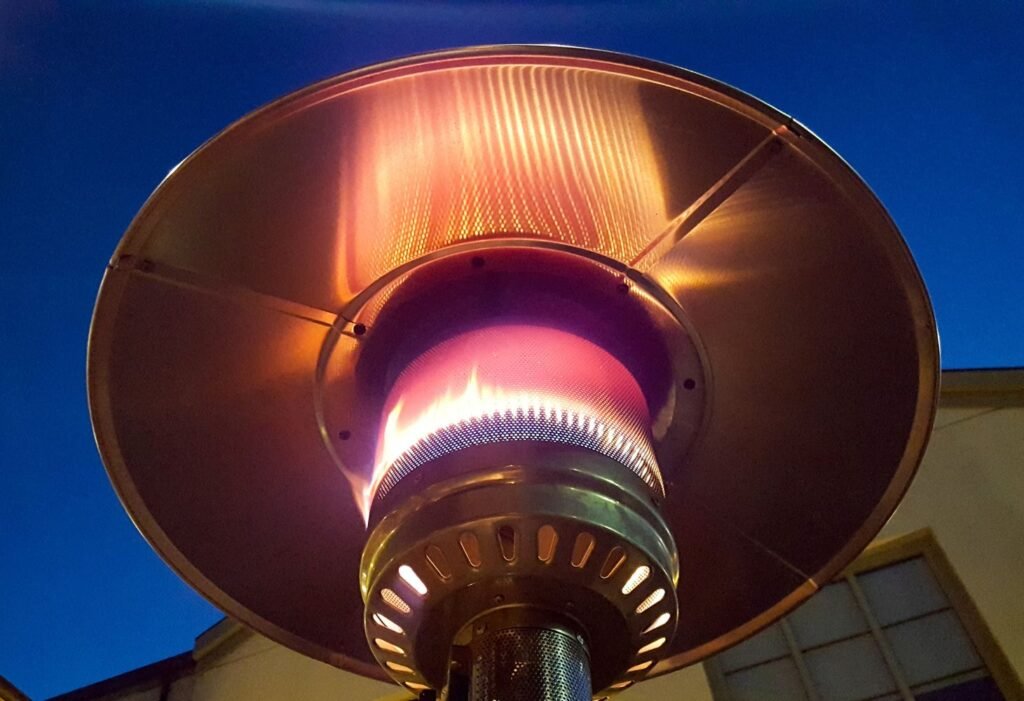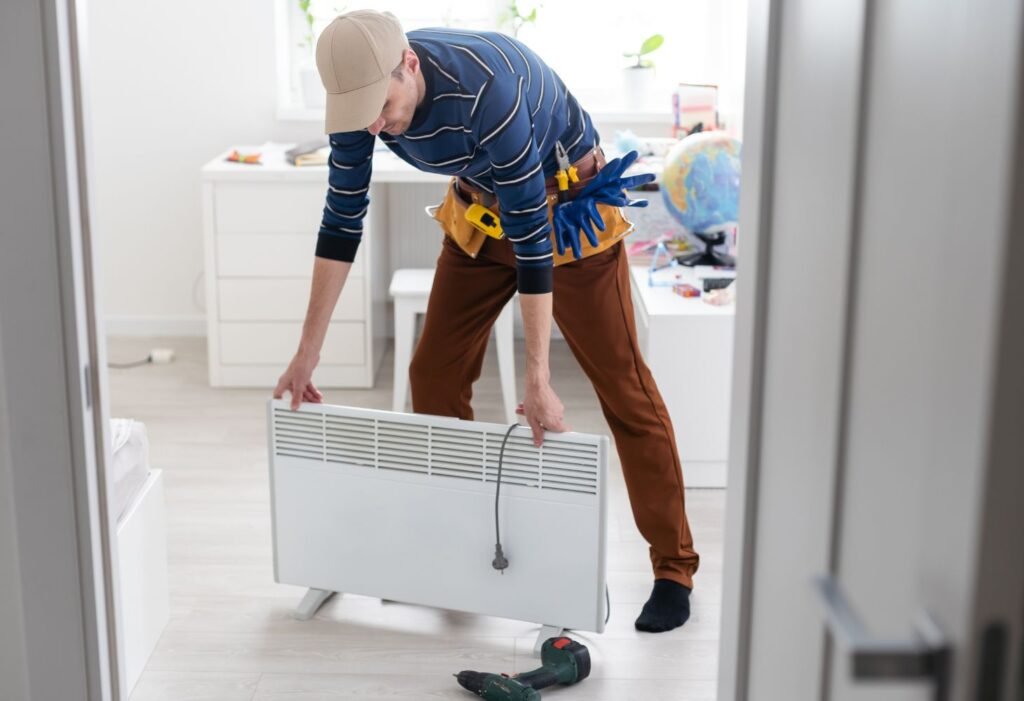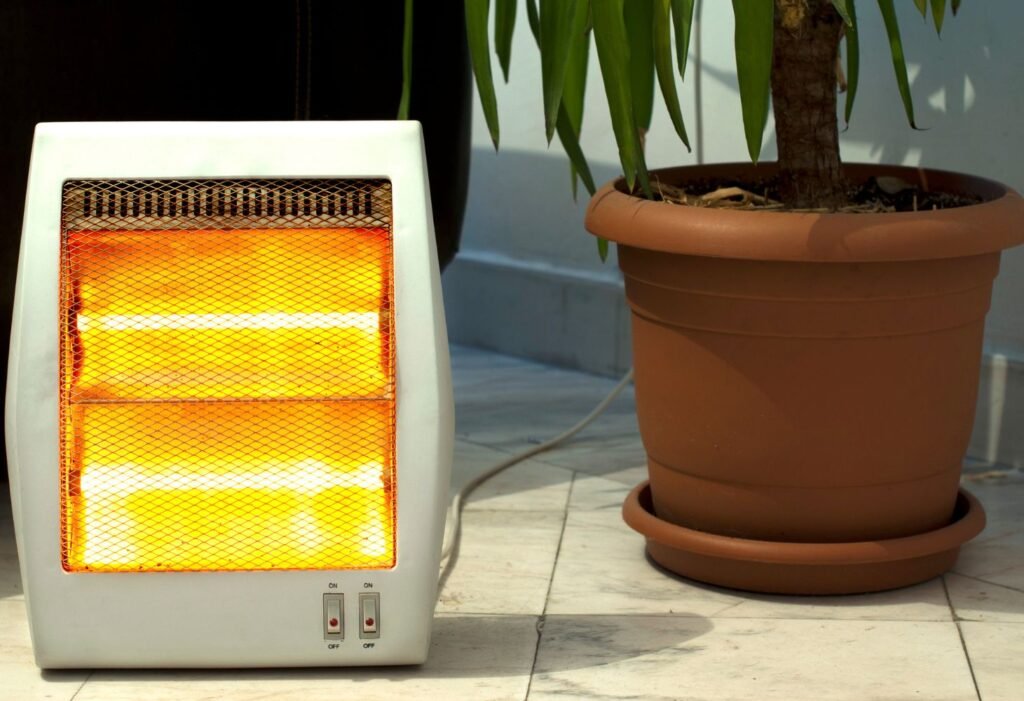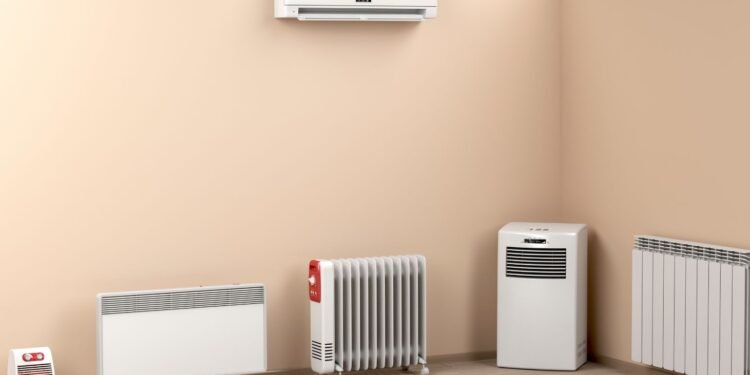There’s nothing quite like stepping into a warm, welcoming garage on a chilly day—whether it’s for tackling a DIY project, working on your car, or simply organizing storage. But when winter bites, an unheated garage becomes a place of discomfort, potentially damaging not just your motivation but also your vehicles and stored goods. Today, we’re exploring the diverse world of garage heaters, helping you understand which options might heat your garage space most effectively.
Types of Garage Heaters
Electric Garage Heater 120V For those with smaller garages, an electric 120V heater is often sufficient. These units are typically easier to install and require less power, making them a great choice for quick, effective heating in compact areas. For example, the NewAir Portable Garage Heater is a popular model that is known for its durability and ability to heat up spaces quickly and efficiently.
Electric Garage Heater 240V Moving up in power, 240V electric garage heaters are perfect for medium to large garages. These heaters are more robust and provide a higher output, which is necessary for maintaining a comfortable temperature in larger spaces. The Dr. Infrared Heater DR-988A is a standout in this category, offering dual heating settings and a built-in thermostat that can handle up to 600 square feet of space.

Propane Garage Heater For garages that lack electrical wiring or for those who prefer a portable option, propane heaters are a go-to. These are especially useful in remote areas where electricity is scarce. However, it’s crucial to ensure proper ventilation to avoid risks associated with fumes. The Mr. Heater Big Buddy is an excellent choice, renowned for its safety features, including an automatic low oxygen shut-off system.
Infrared Garage Heater Infrared heaters operate differently, heating objects and surfaces rather than the air. This method provides a more consistent temperature without the warmth escaping when you open a door. They’re ideal for activities that require you to be stationary for periods, such as woodworking or mechanics. The SunStar Heating Products Garage Tube Heater is a great example, well-regarded for its efficiency and the gentle heat it radiates.
Key Features to Consider
With and Without Thermostat Choosing a garage heater with a thermostat offers the convenience of setting and maintaining a desired temperature, potentially saving on energy costs. Models like the Fahrenheat FUH Electric Heater allow for precise temperature control and feature automatic shut-off to prevent overheating. Conversely, non-thermostat models, though cheaper, require manual operation, which might be inconvenient for some users.
Plug-in Garage Heater Plug-in garage heaters are the epitome of convenience, easily connecting to existing outlets and often portable. They’re best used in smaller garages where moving the heat source closer to the workspace or changing the position based on current tasks is necessary. The Cadet RCP402S Space Heater is a powerful option that can easily be moved around and comes with a built-in fan to distribute heat evenly.
By understanding the types of garage heaters and their specific features, you can make an informed decision about the best way to keep your garage warm and usable throughout the colder months. Each type of heater has its benefits, depending on your garage size, your accessibility to power sources, and how you use your garage.
Energy Efficiency and Safety

Low Energy Garage Heaters In today’s world, where energy efficiency is not just a luxury but a necessity, opting for a low-energy garage heater is both economically and environmentally prudent. These heaters are designed to provide optimal warmth without consuming a lot of power. When selecting a low-energy heater, look for models that boast high efficiency and low wattage while still providing adequate heat output. LED displays, programmable timers, and adjustable thermostats also contribute to better energy management.
Cost-effectiveness and Environmental Impact Energy-efficient heaters, while sometimes more expensive upfront, can significantly reduce your electricity bills. They are designed to use less energy to produce the same amount of heat as their less efficient counterparts, which also means they have a lesser environmental impact. Moreover, choosing a heater that uses sustainable fuel sources or has a low carbon footprint can further help in reducing your overall environmental impact.
Safety Features Safety is paramount when installing any type of heater in your home. Look for features such as automatic shut-off, overheat protection, and tip-over switches, which are essential for preventing accidents. It’s also important to select heaters that are certified by recognized safety organizations, such as Underwriters Laboratories (UL) or the Electrical Testing Labs (ETL).
How to Ensure Safe Operation Always follow the manufacturer’s instructions for installation and use. Keep flammable materials, such as paper, clothing, and gasoline, at least three feet away from the heater. Ensure that the heater is placed on a stable, flat surface where it is not likely to be knocked over. Regularly inspect your heater for any signs of malfunction or damage, and never leave a heater operating unattended.
Installation and Maintenance
Tips on Installing Different Types of Heaters Each type of garage heater comes with its own set of installation requirements:
- Electric Heaters: Often the easiest to install, many simply require a suitable power outlet. However, high-powered models might need a dedicated circuit.
- Propane Heaters: These need to be placed where there is adequate ventilation to prevent the build-up of carbon monoxide.
- Infrared Heaters: Must be carefully positioned to direct the heat to desired areas without obstruction.
If you’re not confident in your ability to install the heater safely, it’s wise to hire a professional. This ensures that your heater is installed correctly and operates safely and efficiently.

Routine Maintenance Advice to Prolong Heater Life Maintaining your garage heater is crucial for ensuring it operates efficiently for many years. Regular maintenance tasks include:
- Cleaning: Dust and debris can accumulate in and around your heater, which can affect its efficiency. Cleaning the exterior with a soft cloth and the interior using a vacuum with a brush attachment can help maintain its performance.
- Inspections: Periodically check for any signs of wear and tear or damage. Look for frayed cords, damaged plugs, and signs of rust or corrosion. If you spot any issues, it’s important to address them immediately to prevent further damage or potential safety hazards.
- Storage: If you use a portable heater that isn’t needed year-round, make sure to store it in a dry, clean space. Avoid placing heavy items on top of or next to the heater, as this could cause damage.
By understanding the essentials of energy efficiency, safety, installation, and maintenance, you can ensure that your garage heater is a safe, economical, and effective solution for your space. Whether you’re tinkering on projects, parking your car, or just trying to keep your belongings in good shape, a well-chosen garage heater can make all the difference. Remember, taking the time to select the right heater and maintain it properly will pay off in comfort and cost savings down the road.
Is 1500 watts enough to heat a garage?
1500 watts is generally adequate for heating smaller garages up to 150 square feet. For larger spaces, a more powerful heater might be necessary to maintain comfortable temperatures, especially in colder climates.
Does a garage heater use a lot of electricity?
The electricity usage of a garage heater depends on its wattage and how long it runs. Higher wattage units, like 240V heaters, and frequent usage can lead to significant electricity consumption. To minimize costs, consider a heater with a thermostat or a low-energy model.
How do I choose between a 120V and a 240V electric garage heater?
Choosing between a 120V and 240V electric garage heater depends on the size of your garage and the existing electrical infrastructure. A 120V heater is easier to install and suitable for smaller spaces, whereas a 240V heater is more powerful and better for heating larger areas more efficiently.
Are propane garage heaters safe to use?
Propane garage heaters are safe when used correctly. It’s crucial to ensure proper ventilation to avoid carbon monoxide buildup and to follow the manufacturer’s instructions regarding placement and maintenance.
What are the benefits of an infrared garage heater compared to other types?
Infrared garage heaters heat objects and surfaces directly, making them more efficient for direct heating and less susceptible to heat loss through air movement. They are ideal for environments where quick, targeted warmth is needed, and they can also be more energy-efficient.


